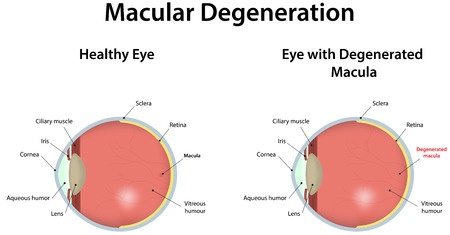Cell Therapy May Restore Sight in People with Macular Degeneration

Researchers at Jerusalem’s Hadassah University Medical Center are using stem cells obtained from human embryos to develop a pioneering technique that could help millions of people see again.
Macular degeneration is the most frequent cause of blindness in people above the age of 60. It leads to the loss of sight in more people than glaucoma and cataracts combined. Macular degeneration affects approximately 10 million people in the US, 6 million people in the United Kingdom, and millions more around the world. The condition is the result of degeneration of cells in the central retina. The retina in the eye is the layer that captures images. These images are transmitted to the brain via signals in the optic nerve. The central portion of the retina is called the macula. It helps us focus, see fine details, recognize colors, and read.
The most common type of macular degeneration is the dry form, which affects 9 out of 10 people. In this form of macular degeneration, the retinal pigment epithelial cells break down or thin down. Currently, this is an incurable condition. People with the dry form of age-related macular degeneration slowly lose their ability to see and nothing can be done about it.
Led by Professor Benjamin Reubinoff, an expert in tissue regeneration, the joint Israeli-American research team has developed a revolutionary technique where stem cells obtained from human embryos are injected directly into the eye to replace the damaged retinal cells. The procedure takes a mere 15 minutes to complete and can be performed under local anesthesia. A small number of patients in Israel and the US are undergoing the trial at present, but more extensive trials are planned. The hope is that this therapy will help restore sight in patients with dry macular degeneration for which there is no approved therapy at present.
What retinal pigment epithelium cells essentially do is collect light and convert it into vision. The team has modified embryonal stem cells so they are able to repair these light-collecting cells which are damaged. The trial obtains the stem cells from embryos that would otherwise be discarded after they are no longer needed by couples who have undergone treatment for infertility.
Before beginning human trials, the researchers in Israel established that it was successful in restoring sight in rats with a genetic disorder that causes blindness similar to macular degeneration. It is unclear whether one treatment will be sufficient. Repeat top-up treatments may be needed to maintain sight in these patients. Professor Reubinoff believes the potential to help millions of people see again is huge. The idea is to save the cells that have not yet died and stop the disease from progressing.
References:
- http://www.express.co.uk/life-style/health/709380/Pioneering-stem-cell-team-fights-develops-treatment-to-fight-blindness
- https://www.macular.org/what-macular-degeneration


